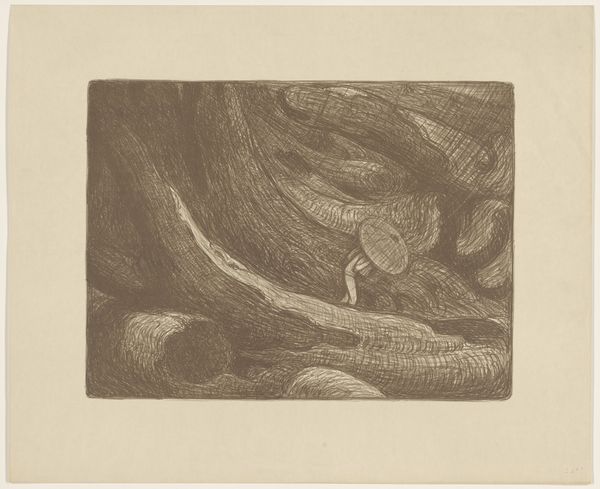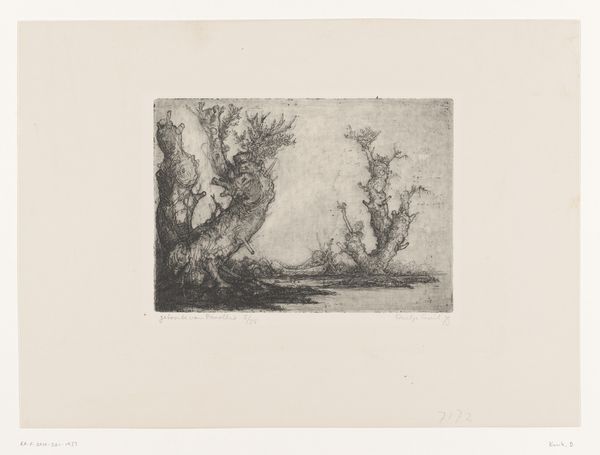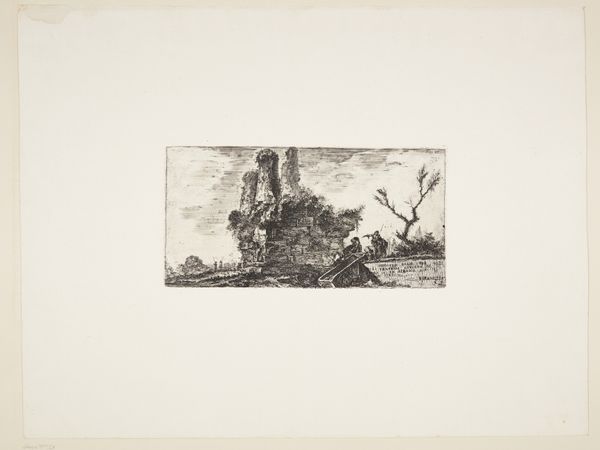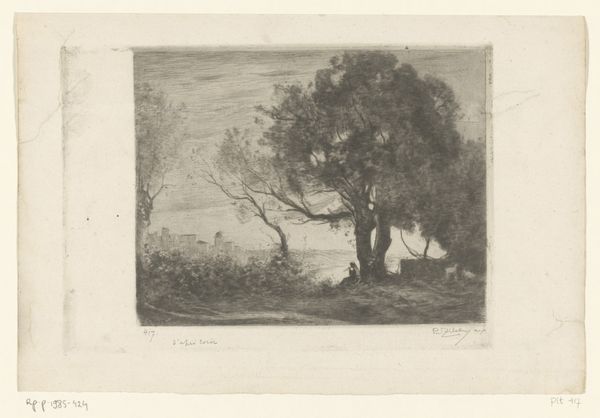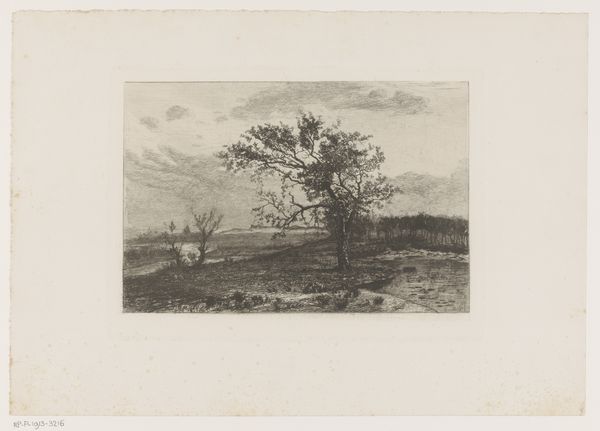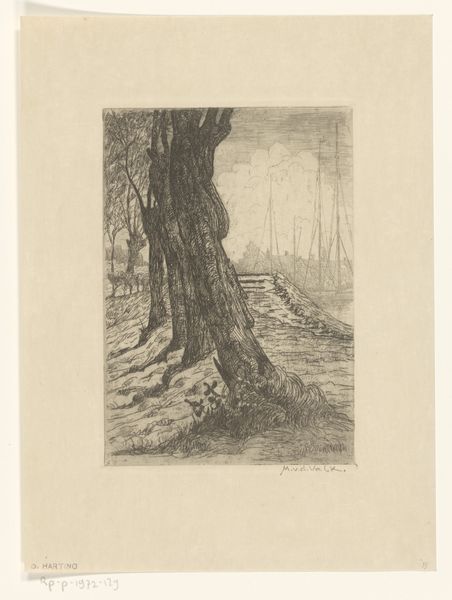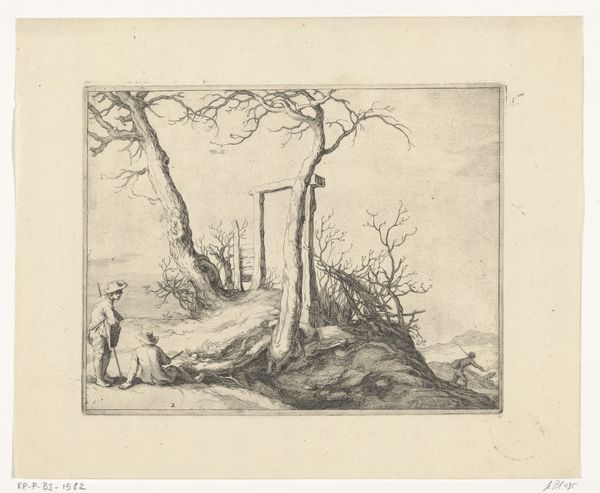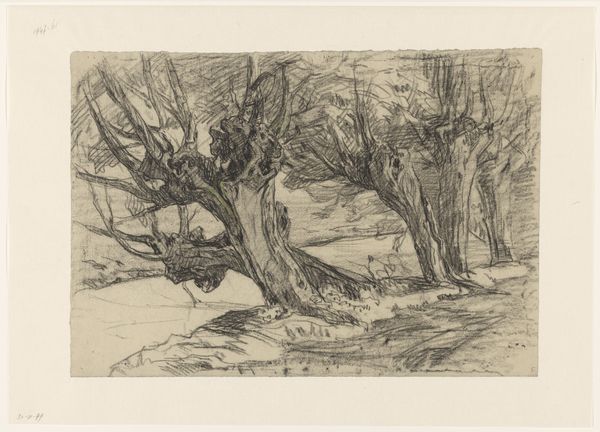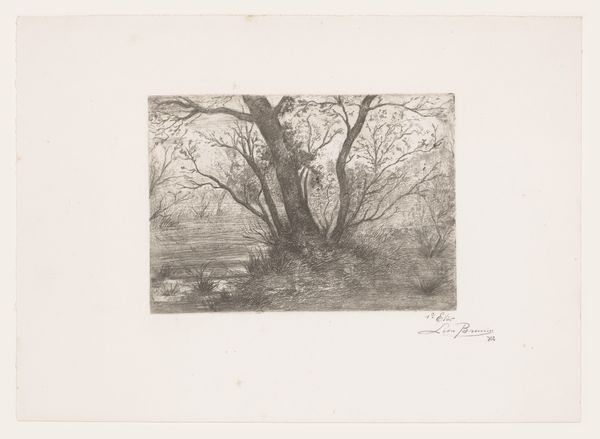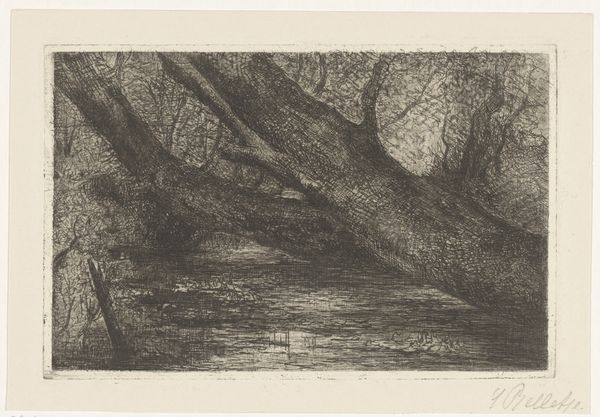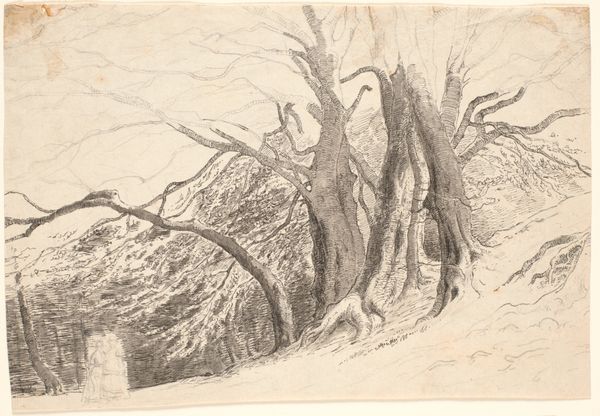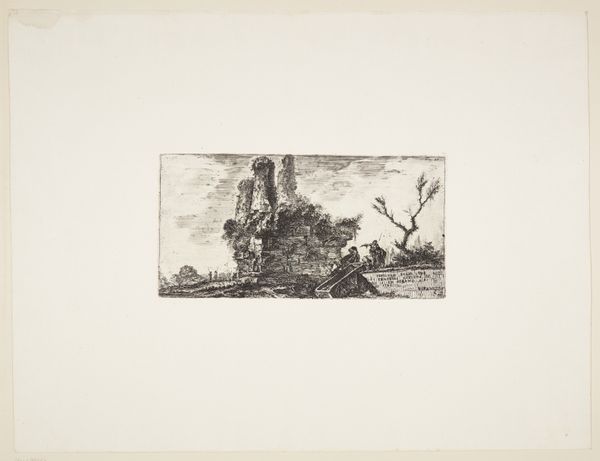
Dimensions: height 176 mm, width 258 mm
Copyright: Rijks Museum: Open Domain
Curator: So, we’re looking at Johannes Mattheus Graadt van Roggen’s "Bosbrand in het Forêt de Fontainebleau," an etching from 1908. Editor: It’s… striking. The desolate tree dominating the foreground against what looks like a raging fire – all rendered in such a detailed etching. What stands out to you most about this piece? Curator: It's the labor-intensive process of etching itself. Each line meticulously placed, creating this atmosphere of devastation. Think about the socio-economic conditions: What does it mean to depict nature, especially destructive forces like fire, through this very mediated, painstaking industrial craft? It contrasts so starkly with, say, painting en plein air. Editor: Right, instead of capturing a fleeting moment, it's a deliberate act. So the choice of etching emphasizes something beyond just the scene? Curator: Precisely! The Forest of Fontainebleau itself, while a leisure spot for Parisians, also provided timber and resources. Consider the artist’s consumption of materials – metal plate, acids, paper. It becomes a comment on our relationship to the environment and the act of creation mirroring destruction, wouldn't you say? What do you think the material nature of printmaking brought to landscape art? Editor: I never thought of it that way! The printmaking process highlights the conscious, almost laborious, exploitation of nature, mirroring the burning forest. The 'hand-made' aspect adds weight, and invites us to consider not only the imagery, but the process itself as an active cultural and material statement. Thanks, I really appreciate you sharing your view. Curator: My pleasure. It is often the material reality of artmaking that opens up the richest insights.
Comments
No comments
Be the first to comment and join the conversation on the ultimate creative platform.
